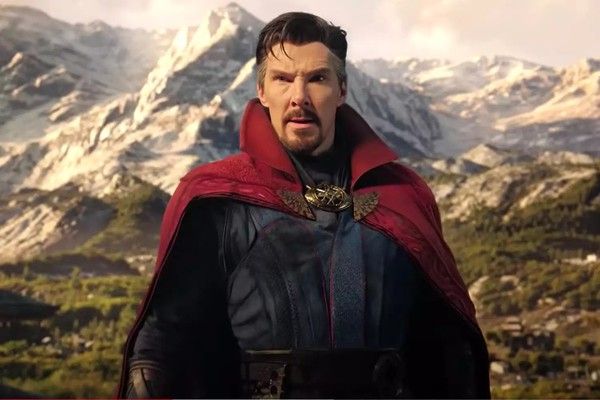Disclaimer: The following review contains spoilers for Dr. Strange in the Multiverse of Madness.

The latest long-awaited addition to the Marvel Cinematic Universe (MCU), Dr. Strange in the Multiverse of Madness, was released in Korean cinemas on May 4. This is the second film centered around the master of the mystic arts and is also the 5th cinematic installation into the MCU’s “Phase Four”, their next series of film projects after the infamous Avengers: Endgame thriller that concluded Phase Three in 2019.
Before even reviewing the content of the film, the Multiverse of Madness begins to stand out from previous MCU films. This was one of many films that were delayed over the COVID-19 pandemic, not just within the MCU but in the entire film genre. The six-month delay meant many script reviews and re-shoots, especially with the release of Disney+ shows within the MCU calling for continuity reviews. This arguably affected Multiverse of Madness more than any other film, due to the amount of plotline overlap with other MCU films and TV shows that were being released in the same period.
Director Sam Raimi was an X-factor in the development of Multiverse of Madness. Possibly best known for his work on the Spider-Man trilogy starring Tobey Maguire, his latest film exposed a new generation to his unique style of camerawork, humor, and a strong penchant for morbidity. Multiverse of Madness very much stretched its PG-13 rating, with brutal scenes that would normally warrant a more mature rating only held back by quick cuts and very well-designed CGI. This paired especially well with the change in tone of the MCU, as the introduction of the multiverse introduces an infinite amount of each character. This meant that Raimi had near free reign in orchestrating the deaths of the characters, including a different universe’s Dr. Strange, which allowed him to further showcase his style.
Raimi’s tendency to torment his characters was on full display as he sculpted an emotionally volatile Dr. Strange (played by Benedict Cumberbatch) and a grieving, delusional Wanda as the Scarlet Witch (played by Elizabeth Olsen). Designed to show the characters’ inner demons, Raimi paired close-up eye-level shots with hallucinations of supernatural forces portraying the demons (sometimes quite literally) plaguing the innermost thoughts of each of these characters. His horror-leaning style matched very well with his choice to split the identities of the Scarlet Witch and Wanda Maximoff as shown in the hallucination scene between Professor X and the Scarlet Witch. Portraying Wanda’s personality as quite literally trapped by the corruption of the Scarlet Witch within her own mind and body not only adds to his horror style but also lowers the emotional shock from the speed with which Wanda was revealed as the outright antagonist of this film.
Something unique Raimi brought to the MCU was short, frenetic camera movements from the perspective of the antagonist. This reverses the role experienced by the viewer and induces anxiety in the audience, making monster attacks seem more visceral while making the protagonist seem even more helpless. His use of Dutch tilts alongside the camera movements was almost solely centered around the Scarlet Witch being portrayed as an unstoppable demonic antagonist. The fact that this supernatural villain was clothed in a previously friendly face accentuates Raimi’s anxiety-inducing cinematography style even more.
In terms of storyline content, this film is a gold mine for those familiar with Marvel comic books. The introduction of universe designations, with the alternate Illuminati-containing universe designated 838 and our own MCU as 616, sets the MCU up for further collaborations between different universes. Yes, this means that character deaths are slightly less permanent than before, but don’t expect Marvel to start resurrecting characters right off the bat. Speaking of the Illuminati, this is a reference to a secret organization from the Marvel comics created to discuss and make difficult decisions about the Earth and its heroes. In the comics, the members of the Illuminati have varied and have included the likes of Iron Man, Black Panther, Captain America, Reed Richards, and Namor. The MCU version is different, introducing Captain Carter, Charles Xavier, Captain Marvel, Reed Richards, Black Bolt, and Mordo as the six standing members. Those unfamiliar with the comics likely could have seen this “Illuminati” reference as a weak Gen Z humor attempt, and it’s easy to see why. The addition of America Chavez from the comics is a signal of the direction that the MCU is taking over the coming years. In the comics, she has been a member of several superhero groups, including the Ultimates. However, the number of younger potential heroes that could step up to the superhero mantle has increased in the MCU, America included. This is a potential set-up for a rendition of the Young Avengers.
Overall, the film is very plot dense. Important content comes at you right from the start, including the set-up of Scarlet Witch as the villain, Dr. Strange’s own emotional conflicts, the introduction of America Chavez, and the unique functions of the MCU’s multiverse. It has more than the usual amount of fan service references to other films and heroes’ catchphrases, and even the most hardcore Marvel fans will miss details the first time through. So, what should you be familiar with before watching? The recommendation is to at the very least be familiar with the shows WandaVision and What If?, and the film Spider-Man: No Way Home. These pieces set up key characters as well as help with familiarization of the multiverse as a whole. If possible, it is best to watch all of the Phase Four material by Marvel, as it gives the most holistic background to the Multiverse of Madness.

